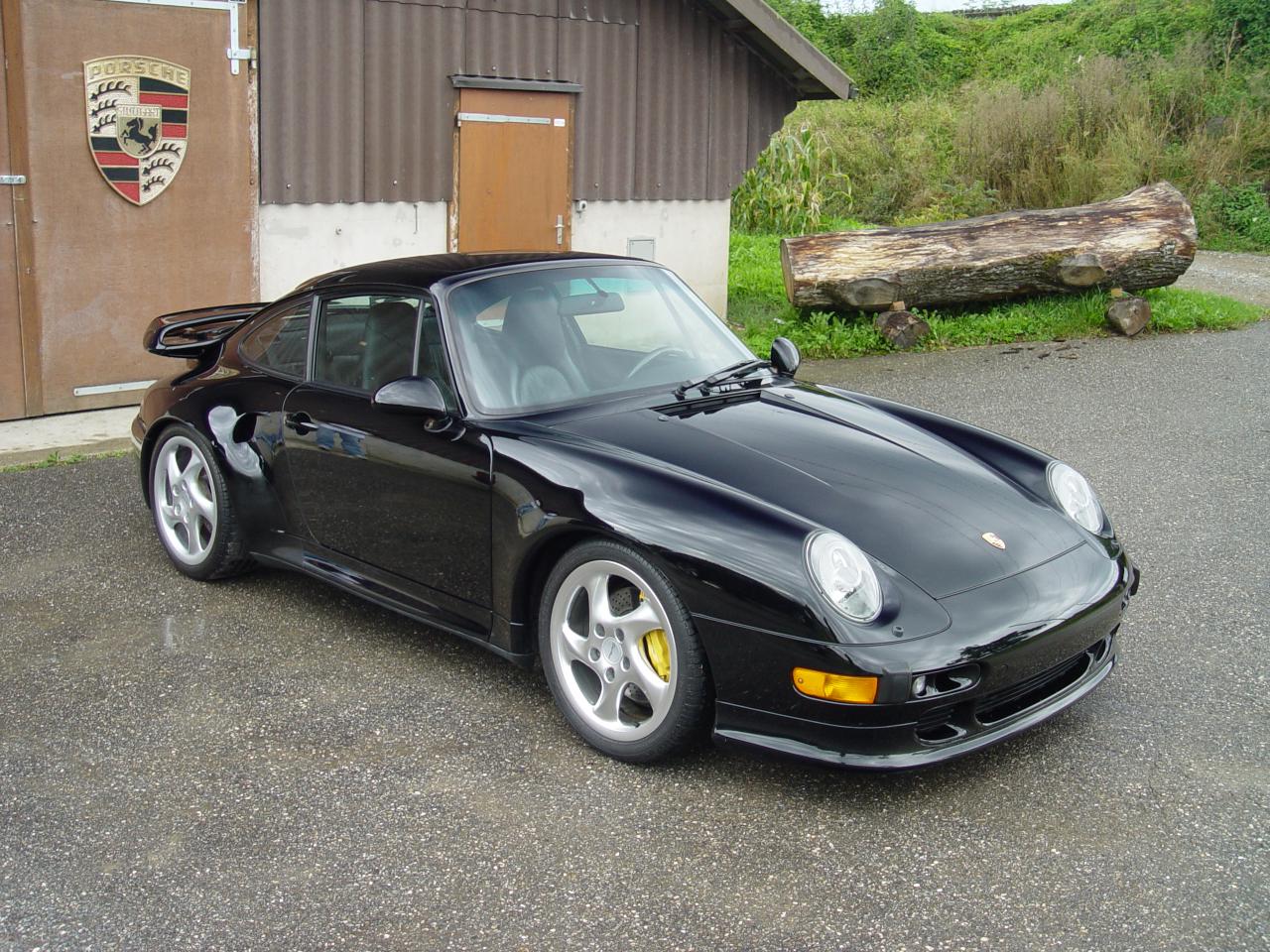Porsche 993 Turbo vs. Dodge Viper vs. BMW E39 M5
1996-1998 Porsche 911 Carrera Turbo (993)

Effortless turbocharged thrust and fearsome AWD grip have now come to symbolize Porsche’s 911 Turbo, but it wasn’t until the debut of the Porsche 911 Carrera “993” Turbo in 1996 that a boosted 911 employed the grip of all four of its tires.
Similar in many ways to the legendary Porsche 959 supercar — first produced in 1987 — the 993 Turbo actually matched or exceeded the capabilities of what once was the world’s fastest production car — astonishing considering the all-wheel-drive 959 is considered one of the most technologically advanced supercars of all-time.
Compared to its two naturally-aspirated, RWD, V10-engined competitors in today’s nostalgia-filled ‘90s shootout, the Porsche 993 Turbo is a bit of an anomaly. Way down in the displacement department, its incredible performance comes from a blend of engineering black magic distinctly German in flavor — a concoction of precision ingredients including twin KKK K16 turbochargers, two air-to-air intercoolers, and an electronically-controlled viscous coupling AWD system.
Its 3.6-liter, twin-turbo, flat-six “boxer” engine under full boost could produce 402hp and propel the 3,390 pound Porsche to 60mph from a dead stop in 3.7s — almost a full second quicker than the 400hp Viper and over two seconds quicker to 60mph than the 394hp M5.
Out of these three 90s superstars, the 993 Turbo is unfortunately the least attainable — heightened demand has seen prices rise up to $300,000 for pristine examples.
Related: Porsche 993 Buyers Guide
1992-1995 Dodge Viper RT/10 (1st Gen/Phase I SR)

The Dodge Viper, unlike the M5 and 993 which were evolutions of previous generations (E34 M5 and 911 Carrera “964”), was a clean-sheet project, purpose-built for performance with little consideration for creature comforts like air conditioning or even safety measures like traction control or anti-lock brakes.
In comparison to the BMW and Porsche, which are built as unibody chassis (meaning the car’s entire shell is essentially the chassis), the Viper is underpinned by a tubular steel frame, a chassis construction technique used in racing applications to create an extremely stiff yet lightweight basis from which to build a vehicle.
Cradled by two imposing rectangular sections of the tubular frame under a large, one-piece clamshell-style composite hood is the Viper’s behemoth 8.0-liter V10. It’s easy to think of the Viper’s engine as being an unsophisticated, blunt force object, but in reality its engineering is quite intricate.
The first Viper prototypes actually used V8 engines, but the call was eventually made to go with a V10 (perhaps Chrysler’s most clutch decision ever). With guidance of Lamborghini, Chrysler engineers improved upon the existing V8, choosing to fabricate the now V10 engine block out of aluminum which shaved 150 pounds of weight. Additionally, the compression ratio was raised, the pistons were lightened, and the rods and crankshaft were strengthened.
In the first generation Viper, beginning with the 1992 model year, Dodge’ all-new pushrod V10 produced 400hp and 465lb-ft., increasing to 450hp and 488lb-ft. in the second generation model, which debuted in 1996.
At its inception the Viper was meant to be a performance bargain with an asking price of around $50,000, and it’s even more so now with earlier model years going for close to the $20,000 mark.
Search: Dodge Viper For Sale
1998-2003 BMW M5 (E39)

The E39 generation 5-series, designed by Joji Nagashima, is lauded by enthusiasts as the prettiest 5-series body ever produced by BMW. And when presented in “M” guise, there’s just something about its understated appearance which so endearingly conceals its capabilities as a performance sedan that sends the car lover into a frenzied lust.
The M5 shares its same basic architecture with the standard 5-series, including its very rigid monocoque body shell and MacPherson strut suspension system. Aluminum was used extensively throughout the suspension in order to save weight, offsetting a mass increase of 22 pounds from the previous generation 5-series (E34) — a small penalty considering a 40% increase in torsional rigidity between the chassis of the E34 and E39.
But all of the fun factoids regarding the M5s basic underpinnings, however novel, are easily overshadowed by its glorious, M Power S62 V8 engine. The 4.9-liter, 394hp V8 was designed with an over-square stroke ratio (94mm bore x 89mm stroke) and had eight 48mm individual throttle bodies which were electronically actuated. Variable camshaft control was employed on both the intake and exhaust camshafts to optimize power at both high and low engine speeds, a technology known as “Double-VANOS.” Throttle response could be changed by the driver’s selection of a “normal” or “sport” mode.
BMW estimated its roughly 4,000 pound M5 was capable of 0-60 in 4.8s, and with the speed limiter removed could reach a top speed of 186mph.
The spread on the used M5 market is wide, depending on year, condition and mileage. Poor examples can be had for $10k whereas top notch ones go for as much as $40k.
Search: BMW M5 For Sale
